Let's say I have the following two tables:
CREATE TABLE [dbo].[ActionTable]
(
[ActionID] [int] IDENTITY(1, 1) NOT FOR REPLICATION NOT NULL
,[ActionName] [varchar](80) NOT NULL
,[Description] [varchar](120) NOT NULL
,CONSTRAINT [PK_ActionTable] PRIMARY KEY CLUSTERED ([ActionID] ASC)
,CONSTRAINT [IX_ActionName] UNIQUE NONCLUSTERED ([ActionName] ASC)
)
GO
CREATE TABLE [dbo].[BigTimeSeriesTable]
(
[ID] [bigint] IDENTITY(1, 1) NOT FOR REPLICATION NOT NULL
,[TimeStamp] [datetime] NOT NULL
,[ActionID] [int] NOT NULL
,[Details] [varchar](max) NULL
,CONSTRAINT [PK_BigTimeSeriesTable] PRIMARY KEY NONCLUSTERED ([ID] ASC)
)
GO
ALTER TABLE [dbo].[BigTimeSeriesTable]
WITH CHECK ADD CONSTRAINT [FK_BigTimeSeriesTable_ActionTable] FOREIGN KEY ([ActionID]) REFERENCES [dbo].[ActionTable]([ActionID])
GO
CREATE CLUSTERED INDEX [IX_BigTimeSeriesTable] ON [dbo].[BigTimeSeriesTable] ([TimeStamp] ASC)
GO
CREATE NONCLUSTERED INDEX [IX_BigTimeSeriesTable_ActionID] ON [dbo].[BigTimeSeriesTable] ([ActionID] ASC)
GO
ActionTable has 1000 rows and BigTimeSeriesTable has millions of rows.
Now consider the following two queries:
Query A
SELECT *
FROM BigTimeSeriesTable
WHERE TimeStamp > DATEADD(DAY, -3, GETDATE())
AND ActionID IN (
SELECT ActionID
FROM ActionTable
WHERE ActionName LIKE '%action%'
)
Query B
SELECT bts.*
FROM BigTimeSeriesTable bts
INNER JOIN ActionTable act ON act.ActionID = bts.ActionID
WHERE bts.TimeStamp > DATEADD(DAY, -3, GETDATE())
AND act.ActionName LIKE '%action%'
Question: Why does query A have better performance than query B (sometimes 10 times better)? Shouldn't the query optimizer recognize that the two queries are exactly the same? Is there any way to provide hints that would improve the performance of the INNER JOIN?
Update: I changed the join to INNER MERGE JOIN and the performance greatly improved. See execution plan here. Interestingly when I try the merge join in the actual query I'm trying to run (which I cannot show here, confidential) it totally messes up the query optimizer and the query is super slow, not just relatively slow.

